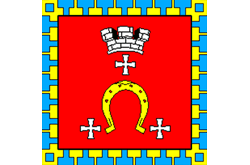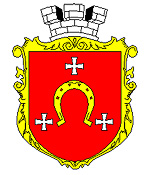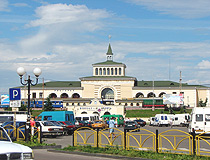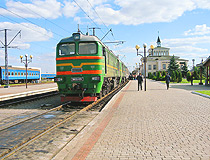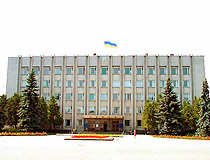History of Kovel
Foundation of Kovel
According to the results of archaeological excavations, settlements on the territory of today’s Kovel already existed about 5-6 thousand years ago. In 1518, the Polish king Sigismund I allowed Prince Vasily Sangushka to form a town from his village named Kovle. He also allowed two fairs to be held there each year. The basis of the town’s economy was small-scale commodity production, which provided for the needs of the local market.
The year 1518 has long been considered the first written mention of Kovel. Subsequently, a record dated 1310 was found about the birth of the Polish king Casimir III in Kovel. However, in 2004, it turned out that this date belongs to another town with a similar historical fate. This is today’s Polish town of Kowal located in Wloclawek County. This historical error dragged on from the middle of the 19th century.
The name of the Ukrainian Kovel most likely comes from blacksmithing, which was developed in these lands in the 10th-13th centuries (blacksmith in Ukrainian is “koval”, in Polish - “kowal”). According to legend, the first person, who settled in this area, was a skilled master blacksmith.
More Historical Facts…
Kovel in the 18th - early 20th centuries
In the 18th century, Kovel was an important craft and trade center of Volhynia. In 1795, after the third partition of Poland, Kovel became a county town of the Volyn Governorate of the Russian Empire.
In 1863, the population of Kovel was 3,646 people. The second half of the 19th century was marked by the rapid economic development of Kovel, especially after the 1861 reform, which abolished serfdom throughout the Russian Empire.
At that time, the Kyiv-Brest railway was laid through Kovel (1873), industry developed, and the population increased several times. Kovel became the third most important town of the Volyn Governorate after Zhytomyr and Rivne. In 1897, the population of Kovel was 17,697 people, including Jews - 8,502, Russians - 4,828, Ukrainians - 2,093, Poles - 1,651, Germans - 197.
In 1907, a new railway station was built according to the project of the architect Alexander Verbitsky. Kovel was dominated by private houses and agricultural plots. Several hotels were built at the beginning of the 20th century. The town also had a tobacco factory, a wine warehouse, a printing house, a bookstore, a railway dispensary, schools, and a gymnasium.
From 1915, during the First World War, Kovel was occupied by military units of the Austro-Hungarian and German empires. During the Ukrainian-Polish war of 1918-1919, the battle for Kovel took place, during which Ukrainian troops captured the town, but were subsequently forced to retreat. In 1921, according to the Treaty of Riga, which ended the Soviet-Polish war, western Volyn, including today’s Volyn Oblast of Ukraine, was ceded to Poland.
According to the 1921 census, Kovel had about 21 thousand residents, most of whom were engaged in crafts, trade, agriculture, and worked at the railway junction.
Kovel during and after the Second World War
In September 1939, Kovel as part of Western Ukraine was annexed to the Ukrainian Soviet Socialist Republic. On December 4, 1939, Volyn Oblast was created with the Kovel district as its part. In 1939, the Jewish population of Kovel was about half of its population - 17 thousand people. By June 28, 1941, when Kovel was occupied by the German army, only a small part of it managed to evacuate. In the first days of the occupation, about one thousand Jews were killed.
On May 21, 1942, two ghettos were created. One for able-bodied people and members of their families (about 8 thousand people), and the second for all other Jews (about 6 thousand people). July 2-4, 1942, all people from the second ghetto were taken out of Kovel and shot.
On August 19, 1942, the occupation authorities began the extermination of people from the first ghetto. The last of them were killed on October 6, 1942. From October 1941 to 1942, about 12 thousand prisoners of war who were kept in the local concentration camp were also killed in Kovel.
On July 6, 1944, Soviet troops regained control over Kovel. Only about 40 Jews returned to it. In 1970, about 250 Jews (50 families) lived in Kovel. According to the All-Ukrainian census of 2001, there were no Jews in the city.
From 1959 to 1989, the population of Kovel almost tripled, from 24,660 to 67,005 people. After Ukraine gained independence in 1991, the population of Kovel continued to grow slightly, unlike many other cities in the country that experienced significant depopulation. In 1993, the flag and coat of arms of Kovel were approved.
In 2008 and 2011, Kovel won the all-Ukrainian competition “The settlement of the best improvement and support of public order” among cities with a population of up to 100 thousand people.
Architecture of Kovel
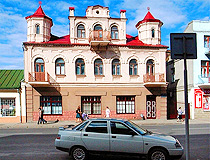
Sunny day in Kovel
Author: Richard Frances
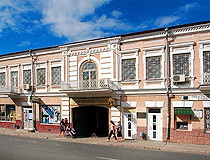
Old building in Kovel
Author: Richard Frances
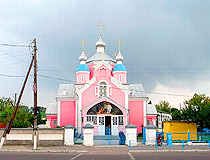
Holy Resurrection Cathedral in Kovel
Author: Richard Frances
Kovel - Features
The main element of the coat of arms of Kovel is a golden horseshoe. It symbolizes blacksmithing (the old craft of the residents of Kovel), as well as the name of the city (blacksmith in Ukrainian is “koval”). In addition, the horseshoe is a symbol of happiness and well-being of people. Three silver crosses symbolize the Christian Trinity. The crown in the form of a fortress tower reminds of the Kovel castle that existed in the past.
The City Day in Kovel is celebrated on July 6 in memory of the city’s liberation from German occupation on July 6, 1944. The actual celebration takes place on the first Sunday in July.
Kovel is one of the largest railway junctions in the western part of the country, which is of great strategic importance for Ukraine, connecting it with other European countries. Railways diverge from Kovel in six directions.
A number of European, national and regional roads pass through Kovel. In particular, the E373 (M07 within Ukraine) highway connects Kyiv and Lublin (Poland) and the E85 (M19) highway, stretching for 2,300 km from Alexandroupolis (Greece), through Bucharest (Romania), Chernivtsi, Ternopil, Lutsk, Vilnius (Lithuania) to Klaipeda (Lithuania).
Kovel is one of the industrial centers of Volyn Oblast. The main industry is the processing of agricultural products. The city has an agricultural machinery plant, a building materials plant, a meat and bakery plant, a garment factory, a veterinary and sanitary plant, a dairy plant, as well as enterprises that serve railway transport.
The climate of Kovel is temperate continental. The average temperature in January is minus 4.5 degrees Celsius, in July - plus 18.5 degrees Celsius. On August 6, 2012, the absolute maximum temperature was recorded in the city - plus 37.1 degrees Celsius.
Main Attractions of Kovel
Roman Catholic Church of St. Anna (1771) - the oldest wooden church in Kovel. This is the only wooden two-towered Catholic church in Volhynia, and only two of them have survived throughout Ukraine.
It was built in the village of Vyshen’ky, located about 50 km southeast of Kovel, from where it was moved to Kovel. Inside you can see a restored baroque altar from the end of the 18th century. This church is a unique religious building not only in Kovel, but throughout Ukraine. Verbyts’koho Street, 1A.
Holy Resurrection Cathedral (1877) - a beautiful architectural monument located in the center of Kovel. This Orthodox church is a typical example of classical church architecture. The main distinguishing feature of this church is the architectural technique of layering volumes that create the visual lightness of a massive stone structure. Nezalezhnosti Street, 174.
Kovel Historical Museum. This museum is located in the old pharmacy building, which is known for being visited by the Kosach family. Larysa Kosach, better known as Lesya Ukrainka, also bought medicines here.
In total, the museum has about 6 thousand exhibits: traditional Ukrainian clothes of the 19th-20th centuries, household items, samovars, old books, weapons from 1812, the First and Second World Wars, etc. The museum also exhibits a selection of old photos from local photo studios. Here you can learn about the history of the Kovel region from ancient times to the present day. Oleny Pchilky Street, 11.
Monument to Taras Shevchenko. This magnificent monument to the famous Ukrainian poet, writer and artist was opened in Shevchenko Park in Kovel in 2005. It is considered the highest monument to Taras Shevchenko in the world. The monument, called “The Apostle of Truth and Freedom”, stands on a four-meter hill. The height of the monument itself is more than 7 meters, weight - 20 tons.
Friedrichson Pharmacy-Museum (1799) - one of the buildings in Kovel that has almost completely retained its original unique appearance. One of the first pharmacies in Kovel, it was opened by the pharmacist Friedrichson. The Friedrichson family worked and lived in this building until 1939. Today, there is still a pharmacy open in this building and in part of the premises there is a museum dedicated to pharmaceuticals. Other premises are occupied by the Kovel city cultural and educational center, an art gallery, and a cafe. Nezalezhnosti Street, 89.
House-Museum of Lesya Ukrainka in Kolodyazhne. Here, about 7 km southeast of Kovel, the childhood and youth of Larysa Kosach, one of the most famous Ukrainian poets, passed. Lesya Ukrainka is her pseudonym. The house-museum was founded in the former estate of the Kosach family in 1949, where Lesya Ukrainka had lived from 1882 to 1897.
The exposition of the museum presents memorabilia of Lesya Ukrainka and her family, lifetime editions of the poet herself and her mother Olena Pchilka, photographs, household and ethnographic items of Volhynia of the late 19th and early 20th centuries, as well as fragments of original interiors.


